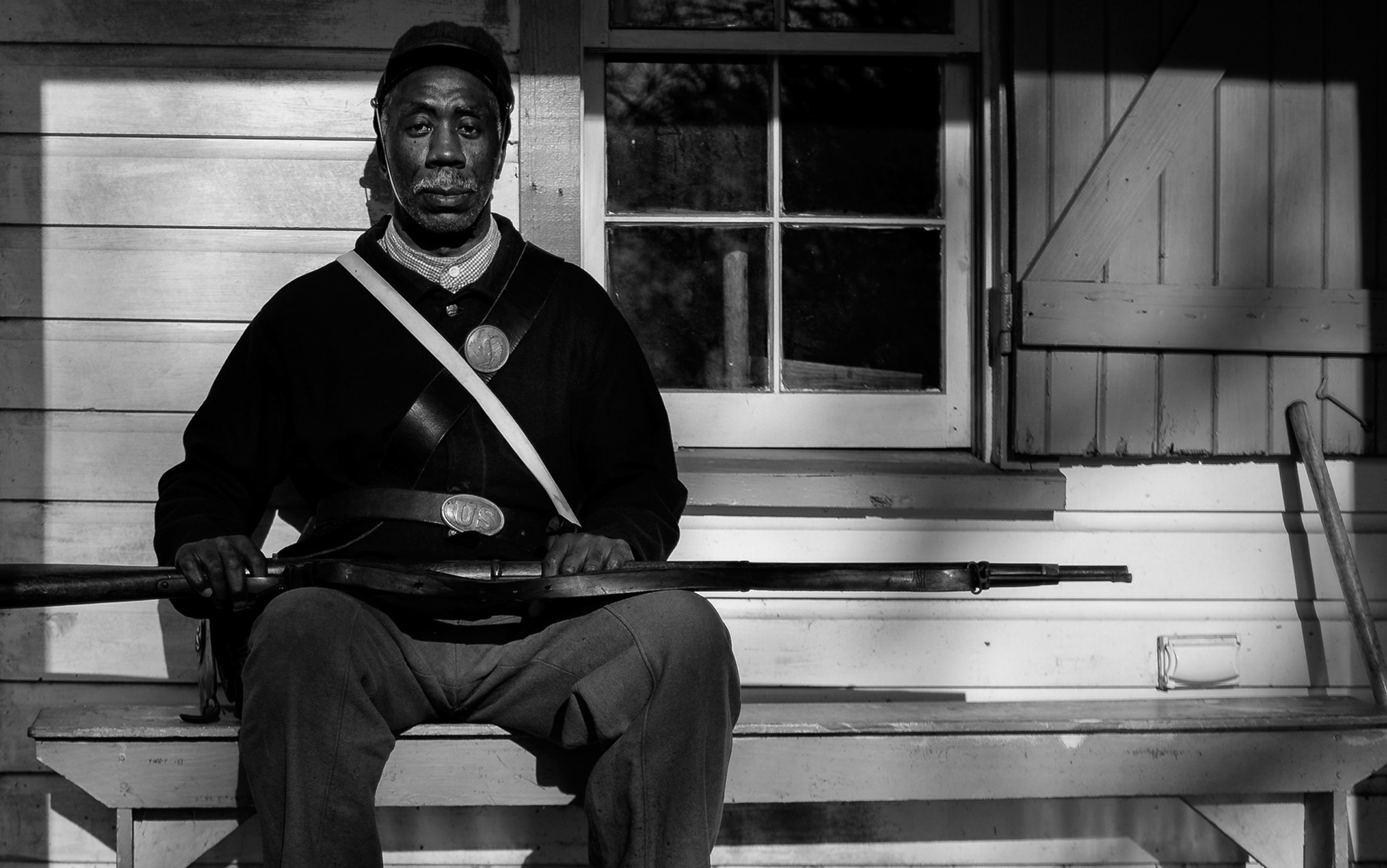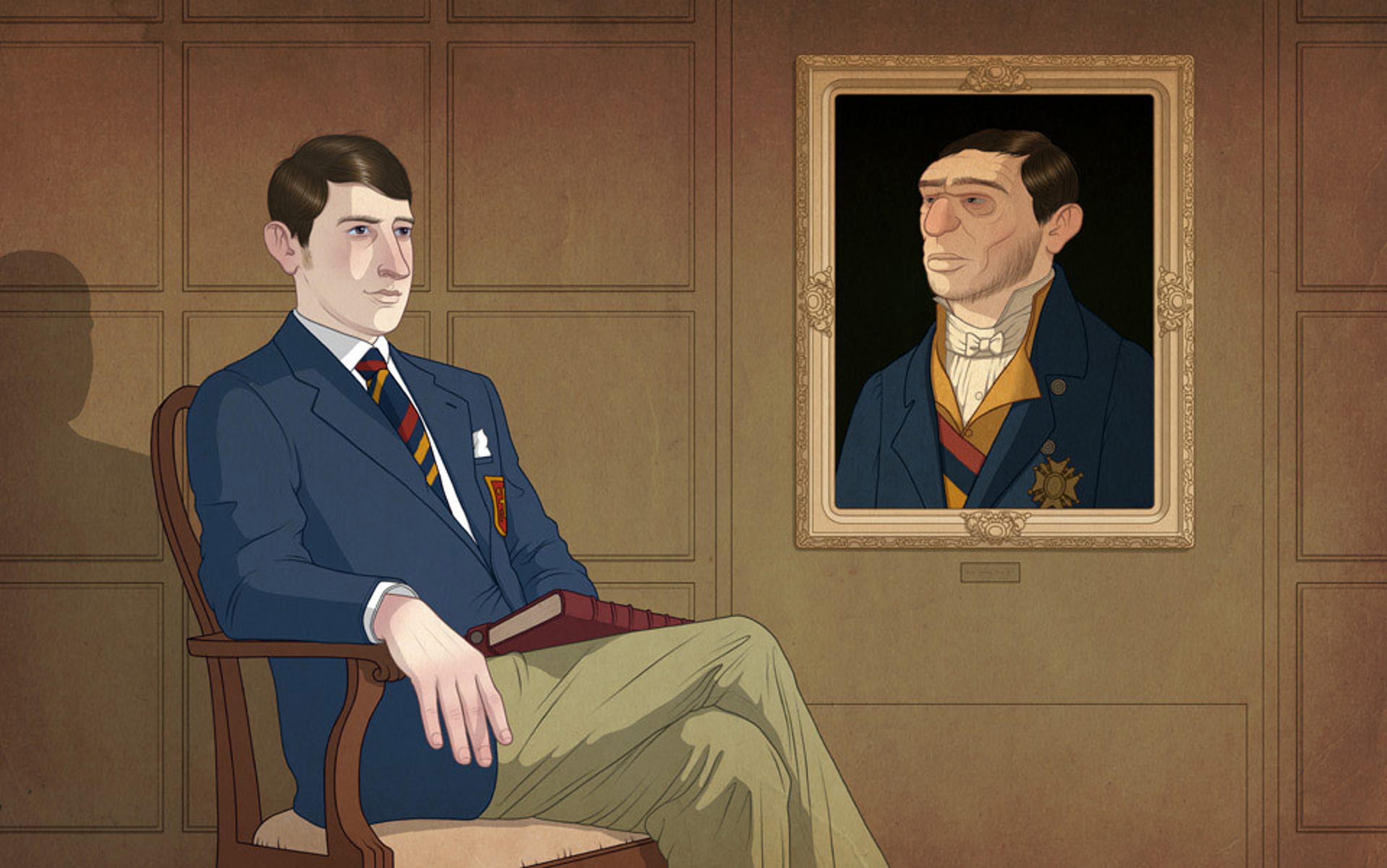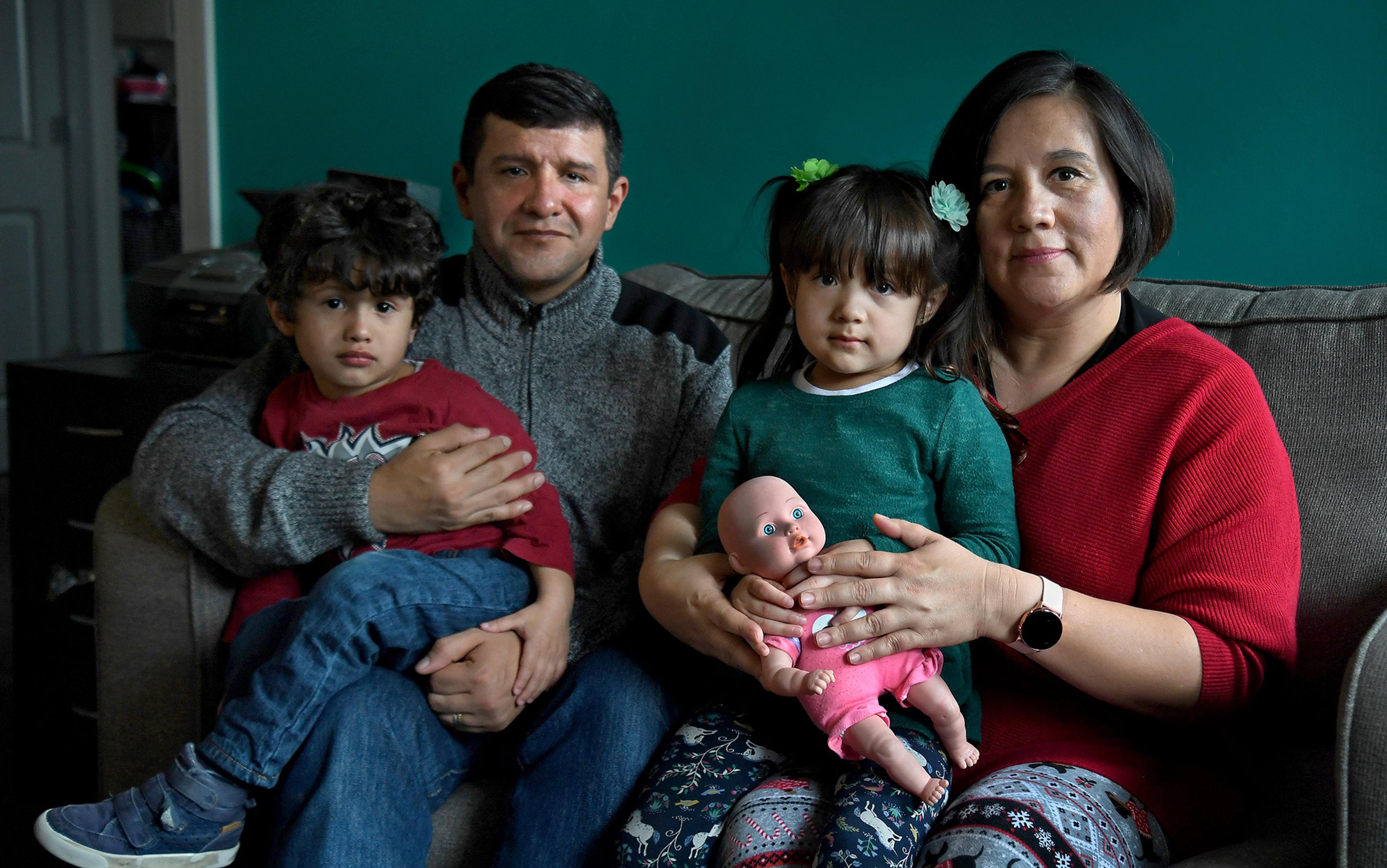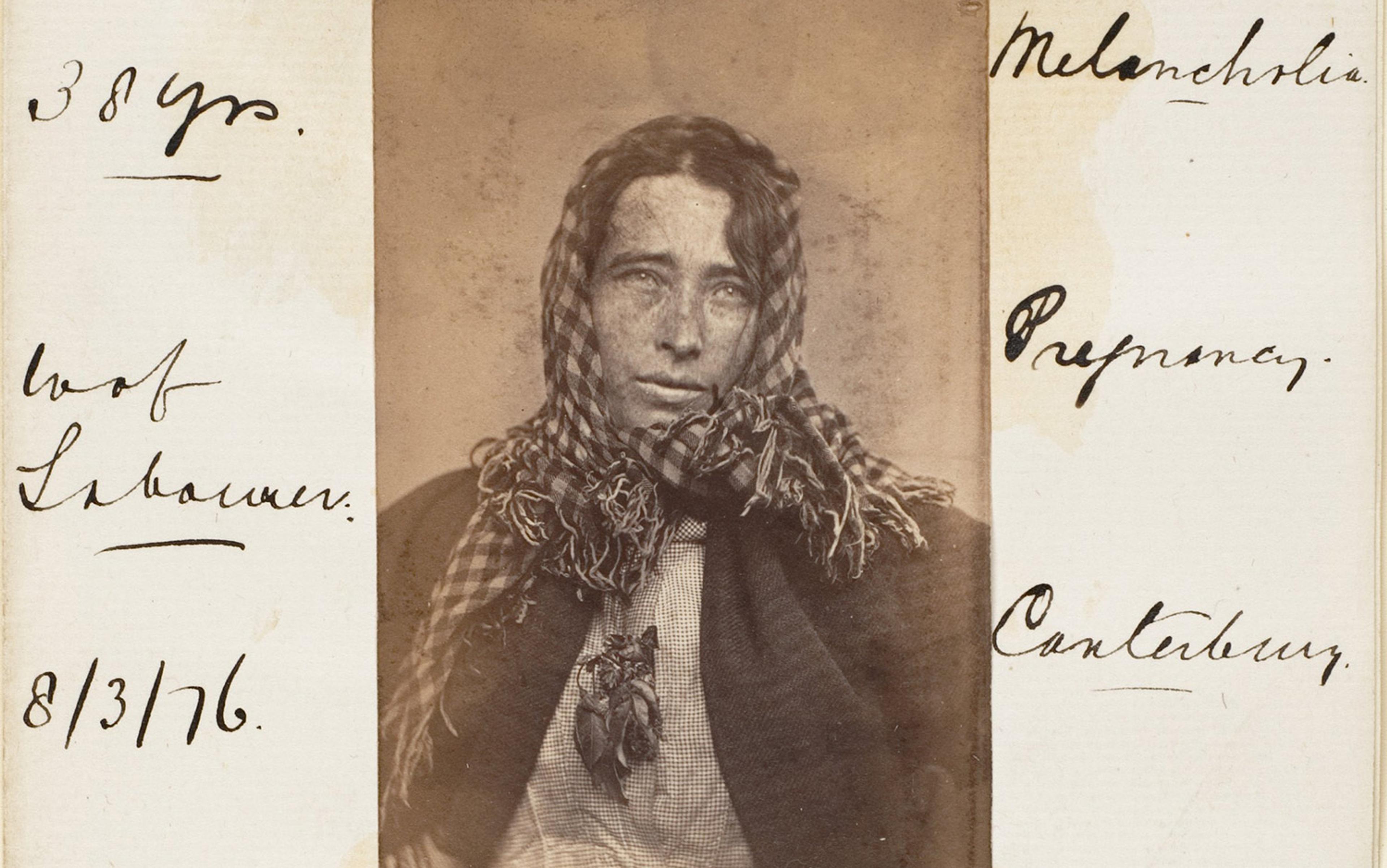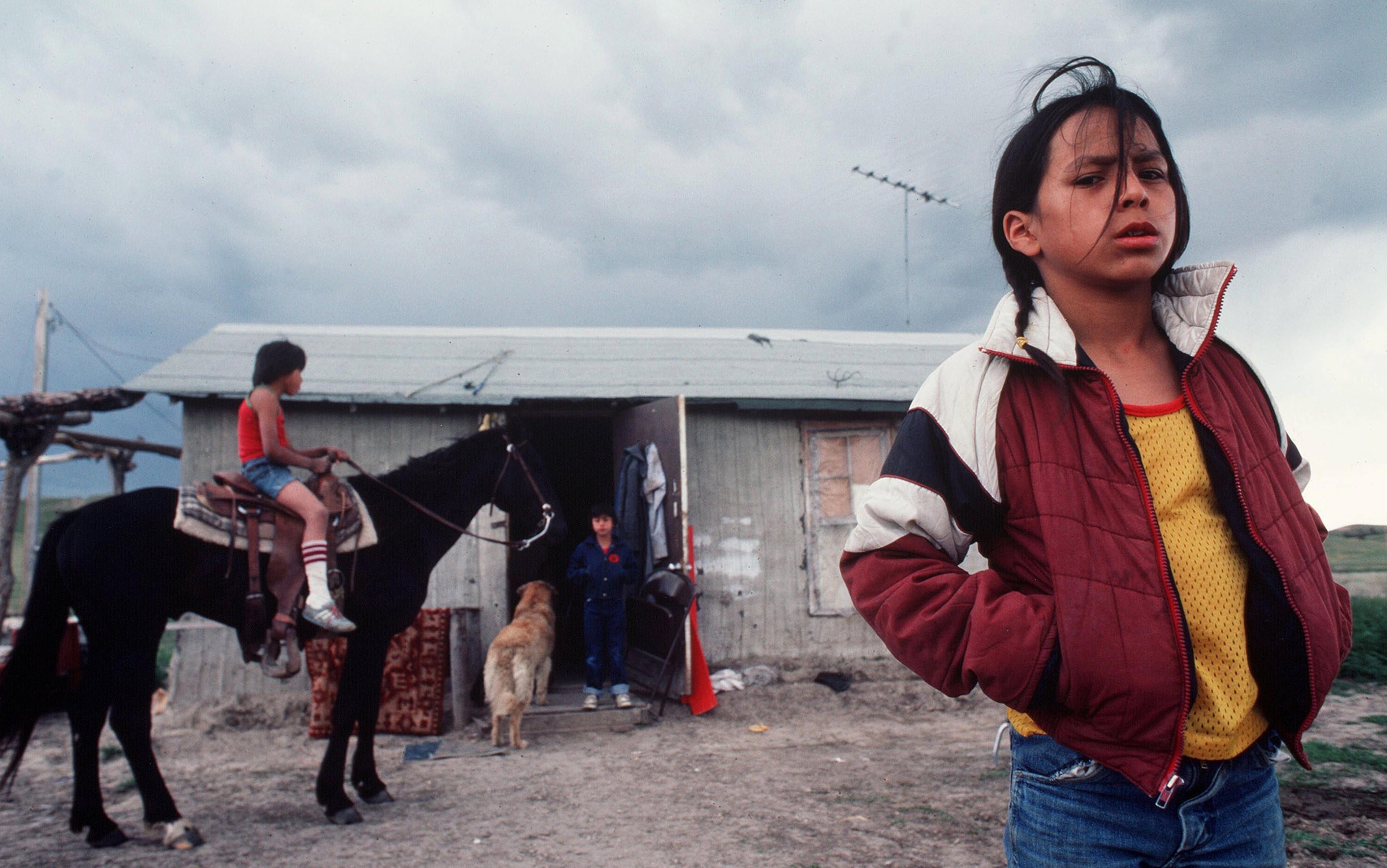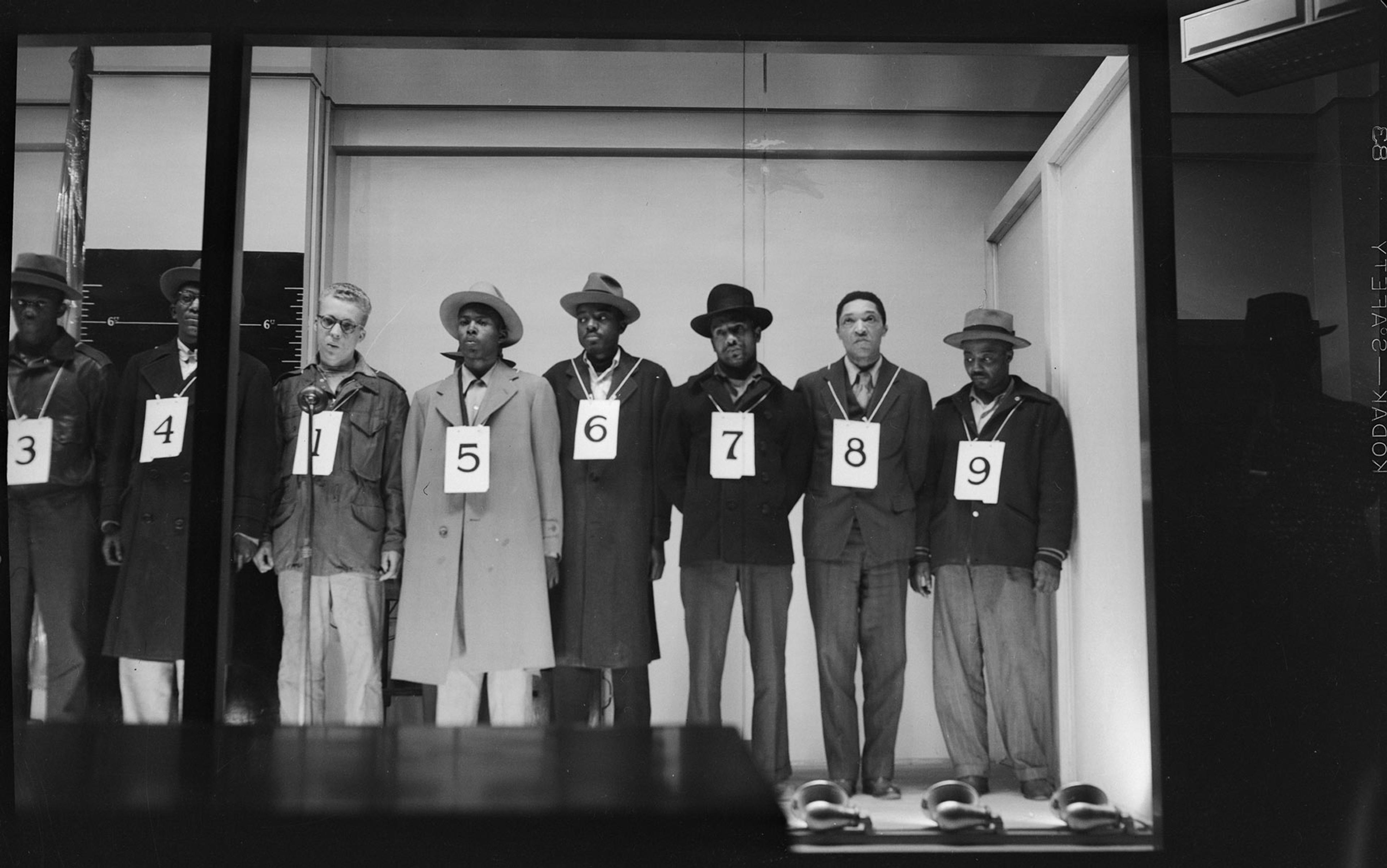The appeal of genetic ancestry testing cannot be understood without also understanding the backdrop of the specific example of Alex Haley’s Roots: The Saga of an American Family (1976). Now known to be fiction based on fact, Roots was published in the 200th year of the United States to great fanfare and with tremendous critical and commercial success. Christened as ‘the most astounding cultural event of the American Bicentennial’ by the Civil War historian Willie Lee Rose (who would also take Haley to task in The New York Review of Books for sloppy historical research), the book’s first print run of 200,000 copies sold out upon publication. Millions of copies have been sold in the intervening decades the world over.
Roots, for which Haley received a Pulitzer Prize, tells the story of Haley’s colourful genealogy, which he traces back to The Gambia. The story is framed as the author’s ‘epic quest’: his prodigious efforts across years and continents to uncover his family’s past. In 1977, when Haley’s work was adapted for television, the story of his ancestors’ trials, tribulations and resilience held the country in rapt attention for eight days. The Roots miniseries had even higher audience numbers than the inaugural broadcast of Gone With the Wind six months earlier (until then the most watched show on TV), and one that was, notably, also concerned with the formative role of slavery in US history.
Haley’s story came under scrutiny soon after it began to circulate, and was criticised for historical inaccuracies. He was accused of plagiarism on several occasions; one case would result in a settlement so large that it was effectively an admission of guilt. But these accusations did not present an obstacle to the story’s power, and the narrative remains a commanding cultural symbol, national script and racial allegory. In her exhaustive essay on the book and the TV show, the British literary critic Helen Taylor described their significance this way:
The impact of Haley and Roots has been profound. For African Americans, deprived for centuries of their ancestral homes and families, enslaved and exploited, denied basic human and civil rights… this book… offered a fresh perspective on their history, community and genealogy.
Taylor suggests that there has been a surprising public reticence surrounding accusations that Haley’s work was marred. She ventures several reasons for these ‘surprising silences’, including the fact that Haley was ensconced in elite networks. To borrow a contemporary phrasing, Roots was simply too big to fail. This was also the case because Haley’s account of the Middle Passage, in which millions of Africans were shipped across the Atlantic as part of the slave trade, and its consequences became an urtext, a primary narrative source of African diasporic reconciliation for a generation of Americans. The story provided a narrative about slavery and its afterlives on the 200th anniversary of a nation that had never fully acknowledged its past. In place of a presidential apology for slavery, or a national discussion on racism, or the promise of reparations, we had Roots.
Haley started a social transformation in how we access and interpret the past. Roots generated excitement around family history; it encouraged the democratisation of a practice that had previously been the provenance of the nobility. In the wake of the phenomenal success of Haley’s book and miniseries, ‘root-tracing kits’ containing family-tree templates and fill-in-the-blanks genealogical charts on ‘imitation parchment’ came on the market in the late 1970s; they were progenitors of today’s genetic ancestry-testing services. Family-history research became a popular pastime for those seeking to discover unknown ancestors. Roots was the result of Hayley’s efforts to uncover the mystery of his ancestral origins with clues garnered from Gambian griots, archival research and his own genealogical imagination. Many have modelled their own ancestry pursuits on Haley’s embellished account.
Genealogists of African descent frequently refer to Roots when describing how their interest in family-history research was piqued. Many of the genealogists with whom I have spoken – typically aged 40 or older, college-educated, and female – were inspired by Haley’s example as teenagers or young adults. The predominance of women in genealogical communities is consistent with the literature on ‘kinkeeping’, a term coined by the sociologist Carolyn J Rosenthal to describe the practice of maintaining family ties – through activities such as fostering communication between members or providing emotional and financial aid to them – as a form of gendered labour. Genealogists can be seen as fulfilling the role of kinkeeper in their families. With genealogical practices of prior times and of today, kinkeeping involves the work of connecting past and present kin with purposeful narrative.
The experience of a genealogist whom I’ll call Elisabeth is typical. I met Elisabeth, a computer scientist in her late 40s, in an online community of black genealogists to which we both belong. I then interviewed her at her home in the northwestern US in 2004. She described the chain of events that had led her to become a genealogist and, some decades later, a genetic genealogist, and waxed nostalgic about a presentation by Haley at her Midwestern high school that had stimulated her interest in genealogy:
Haley came to my high school in 1970. This was before Roots came out. He had a Reader’s Digest article about it out and he was on the road just telling everyone about how he traced Kunta Kinte. And I was in ninth grade and I just sat there mesmerised… Actually, I have a copy of the tape [of Haley’s presentation]. I got in contact with my old high-school civics teacher, out of the blue, last year. And he says: ‘You know, I was going through stuff and I found this old Alex Haley tape. I didn’t know what to do with it – would you like it?’ Of course! And it’s phenomenal! … It was just a fascinating talk; it really was. That’s when I got bit by the genealogy bug.
A friend of Elisabeth’s, whom I’ll call Marla, expressed similar sentiments about Haley’s influence. Although she made a start at genealogical research in the 1960s, following the death of the eldest member of her extended family – its kinkeeper – it was not until a decade later, when she attended a lecture by Haley at a local community college, that she became serious about the endeavour. This encounter impressed upon her that a non-specialist researcher could employ insurance records, land deeds, slave-ship manifests and family-history libraries to trace her roots to Africa. As she explained to me:
It was interesting to hear [Haley] talk about… going to the Mormon temple and going to Lloyd’s of London and all of that. I never figured that I would have access to those kinds of records… I never ever thought that the average person could have accessed it. So I never anticipated being able to… go back to slavery.
Until recently, for persons of African descent and others, pursuing one’s family history has typically entailed genealogical excavation of the type depicted by Haley. Although root-seeking methods have evolved, Haley’s influence remains; the example of his project established an expectation among a generation of readers and viewers in the US and abroad that recovering ancestral roots was not only desirable, but possible.
Why this avid interest in genealogy today? The fact of Haley’s Roots – the powerful testimonies that I heard from Elisabeth, Marla and others notwithstanding – is an incomplete explanation by itself. Haley’s narrative did provide an inspirational account of African-American genealogy, but it also prompted an international conversation on slavery’s bequest to us.
And it supplied a narrative for black life. Noting the Black Power-era context of Haley’s book, the historian David Gerber commented on the striking similarity between Kunta Kinte, Haley’s ancestor-protagonist in Roots, and the subject of The Autobiography of Malcolm X (1965), which Haley co-authored. Gerber said that both fulfilled a collective emotional need for inspirational models ‘of strength, dignity, and self-creation in a hostile or, at best, indifferent White world’. Gerber’s insight points us to the fact that Roots says as much about the time at which it was written as it does about the past. It is, as Taylor argues, a book that resounds at a personal, familial level, yet also invites historical reckoning, social identification and political resonance.
Despite Haley’s heroic, if flawed, example, few African Americans are able to fill in the contours of their past as he did, owing to the decimation of families, which was a hallmark of the era of racial slavery, and the dearth of records from this period. As a consequence, genetic genealogy testing, which is now broadly available and also less taxing – and, owing to the social power of DNA, seemingly more authoritative than conventional Haley-esque genealogical research – holds considerable appeal for many root-seekers.
Genetic genealogy testing emerged from techniques developed in molecular biology, human population genetics and biological anthropology. Direct-to-consumer genetic testing was first available in the US in 2000 from Family Tree DNA, a pioneer in this field that remains an industry leader. When African Ancestry was launched just a few years later, the company was as notable for joining the cutting edge of a new social and technical practice as it was for its niche mission and customer base. By 2004, five other US companies had joined the ranks of African Ancestry and Family Tree DNA. By 2010, 38 companies worldwide offered an array of genetic ancestry-testing services, with 28 of these based in the US.
The companies that sell DNA analysis for genealogical purposes offer three principal forms of analysis for which they create brand names, such as African Ancestry’s MatriClan and PatriClan. Rather than provide companies’ brand descriptions, and for the sake of analytic clarity, here the tests will be classified by what information they provide as an end result to the consumer, because the forms of social orientation that the results suggest are of primary importance to root-seekers. The genealogists I interviewed bought particular genetic tests in order to fulfil distinctive genealogical aspirations, such as corroboration of a multicultural background or association with an ethnic community. The three broad classes of direct-to-consumer (DTC) genetic ancestry services can be categorised as spatiotemporal analysis, racial-composite analysis and ethnic-lineage analysis.
Among the more spectacular claims of genetic ancestry testing is the ability to infer not merely where we come from but what we are
With spatiotemporal testing, a consumer’s DNA sample is classified into a haplogroup – sets of single nucleotide polymorphisms (SNPs) or gene-sequence variants that are inherited together – from which ancestral and geographical origins at some point in the distant past can be inferred. The result orients a consumer in space and time but does not provide identity per se. This form of analysis was made possible by ambitious mapping research on Y-chromosome DNA (Y‑DNA) and mitochondrial DNA (mtDNA), which resulted in theories about the times and places at which various human populations arose. Y‑DNA and mtDNA have distinctive sequence combinations; similar sequences can be classified into broad groups called haplogroups.
Human-population geneticists have devised a system of letters and numbers to identify the region of one’s ancestors, and also the time in history (hundreds of thousands of years ago) during which they would have migrated from Africa. Family Tree DNA, a forerunner in genetic ancestry testing in the US, supplies customers with haplogroup information, as does National Geographic’s Genographic Project. An inferred match with the mtDNA-derived L2a haplogroup – a designation shared by some of the descendants of Venture Smith, the 18th-century slave who wrote the first African-American autobiography – suggests that one’s ancestors lived in Africa approximately 60,000 to 80,000 years ago. In short, spatiotemporal analysis offers ‘deep’ ancestry results that open a window onto the geographic past of ancestors who might have dwelled in a time and place far removed from where root-seekers presently abide.
Among the more spectacular claims of genetic ancestry testing is the ability to infer not merely where we come from but what we are, in the most essentialist sense. These tests, which I classify as racial-composite analysis, claim to ascertain the percentage of three of four supposedly ‘pure’ racial groups. In contrast to spatiotemporal and ethnic-lineage analyses, which rely on mtDNA and Y-DNA, this genomics testing involves the analysis of nuclear or autosomal DNA, which is unique to each person (identical twins excepted, although this is now being debated) and consists of the full complement of genetic information inherited from parents. A DNA sample is compared with panels of proprietary SNPs that are deemed to be ‘informative’ of ancestry. Algorithms and computational mathematics are used to analyse the samples and infer the individual’s ‘admixture’ of three of four statistically constituted racial categories – African, Native American, East Asian, and European – according to the presence and frequency of specific genetic markers said to be predominate among but, importantly, are not distinctive to each of the ‘original’ or ‘pure’ populations.
This form of analysis was first developed by the DNA division of DNAPrint Genomics. When this company launched in 2002, it offered the ‘first genomic ancestry test’; that is, a test based on complete autosomal DNA. A subject of this racial composite testing might learn he is estimated to be 80 per cent African, 12 per cent European, and 8 per cent Native American. DNAPrint Genomics went out of business in 2009, but other companies offer similar services, including African Ancestry’s myDNAmix and 23andMe’s Ancestry Painting. This type of analysis proves useful to those who think that what we understand as racial groups are self-contained and, therefore, that mixture can be ascertained. However, it offers little guidance about one’s geographic or ethnic origins other than in the broadest sense. As African Ancestry cautions customers on its website: ‘YOU WILL NOT LEARN COUNTRIES OR ETHNIC GROUPS.’
With ethnic-lineage testing, an individual’s DNA is searched against a genetic ancestry-testing company’s reference database, which is in most cases proprietary, thus the claims made using it cannot be independently verified. (This is also true of the other types of analysis; DTC genetic testing companies hold data and algorithms as trade secrets.) A match between the sample and the reference DNA or shared haplotypes suggest a shared, distant maternal or paternal ancestor. Most companies offer this type of testing. A typical ethnic-lineage result might inform a test-taker that her mtDNA traced to the Mende people of contemporary southern Sierra Leone. Or a male customer could be inferred to be ancestrally linked to a group of male genealogists who share his surname and Y-DNA profile. African Ancestry’s analyses might thus be regarded as ethnic-lineage instruments through which an undifferentiated racial identity is translated into African ethnicity and kinship. By linking blacks to inferred ethnic communities and nation-states of Africa, African Ancestry’s service offers root-seekers the possibility of constituting new forms of identification and affiliation.
Each of these three types of tests thus offers a different window onto the past and, as the French philosopher Maurice Halbwachs – who in the 1950s developed the concept of collective memory – would remind us, also a distinct vantage on the present. Root-seekers demonstrate their preferences for genetic information in the form of the testing they select and buy. The usefulness of test results depends on the perspective of the root-seeker and the particular questions he or she seeks to answer through genetic genealogy analysis. In my encounters with genetic genealogists, one of the more important insights I gained is that root-seekers’ preferences are shaped by the problems to which they are applied. It should also be noted, however, that many of the test-takers I met used more than one type of genetic genealogy analysis, typically to compare results received from different companies or obtain new information from a company from which services were bought previously (for example, when a company releases a more robust form of test that employs more markers or adds a significantly larger number of samples to its reference database).
Identity and self-making are primary ambitions for genetic genealogists. Questions and desires, and not ‘pure’ science alone, set the terms for how a personal reconciliation project – the pursuit of African ancestry – is carried out. Consumers come to DNA testing with genealogical aspirations: with particular questions to be answered, with mysteries to solve, with autobiographical narratives they want to complete. These aspirations can precondition how genetic test results are received by consumers, and might prompt an uneasy negotiation with the information supplied by genetic genealogy companies.
The root-seekers I encountered over the years have come to invest more confidence in the ability of DNA analysis to augment their family history research in new and exciting ways. They are also engaged in a form of reconciliation, for genetic ancestry testing is, in an elemental sense, always as much about the reconstruction and reunion of the family and community as it is about the individual.
While today’s popular genealogy TV programmes would lead us to believe that root-seekers take up wholesale the information provided to them by genetic ancestry tests and accept it unconditionally, something far more complex is at play. Genetic genealogy tests are deemed reliable to the extent that they are useful for consumers’ myriad aims; for many, this involves strategically marshalling the data. Some use their genetic results as usable narratives that open up new avenues of social interaction and engagement. It is through these sorts of negotiations that contemporary racial politics have begun to move into the terra nova – if not the terra firma – of genetic genealogy.
Racial composite testing has proved unsatisfactory to some who want to re-create Haley’s Roots journey in their own lives. Although composite testing analyses an individual’s full genome, its results can nevertheless lack specificity and usefulness. This was the case for the genealogist I will call Cecily, whom I met at an Afro-American Historical and Genealogical Society (AAHGS) meeting. We began talking after a presentation on genetic genealogy by the geneticist Rick Kittles, Co-Founder of African Ancestry. Cecily, aged around 50, had previously bought ethnic-lineage analysis from that company and, as we sat near their booth, I asked whether she also planned to pursue racial-composite testing. She told me: ‘I don’t need to take that test. We’re all mixed up. We know that already.’
In a similar way, some root-seekers see spatiotemporal testing results as too remote. Marla, a Californian in her late 50s, is retired from a job with the US Department of Defense. With her salt-and-pepper Afro, impressive knowledge of many subjects and precise language, she put me in mind of the late novelist Octavia Butler. In addition to the genealogy chapter she leads with Elisabeth, Marla also moderates an internet forum dedicated to discussion of DNA testing for genealogical purposes, and has bought several tests. An mtDNA test from African Ancestry matched her with the Tikar people of Cameroon. As I have found is often the case, Marla’s initial testing experience stimulated further curiosity about her ancestry rather than satisfying it fully. She then bought a racial-composite test for herself, and also paid for three family members to have ethnic-lineage testing through Trace Genetics (a company known for its large database of Native American reference samples, which was acquired by DNAPrint Genomics in 2006 before the latter company ceased operations in 2009; it is now defunct).
Genetic genealogy challenges not only prior expectations but also self-perception and social coherence
For another round of testing, Marla sought to find out more about the maternal line of her deceased father. As a seasoned genealogist, she knew that this information could be accessed if she had a paternal second cousin’s DNA analysed. In an email exchange, she detailed Family Tree DNA’s spatiotemporal analysis of her cousin’s genetic sample:
The mtDNA of my 1st cousin’s daughter (paternal grandmother’s line) traced to ‘Ethiopia’ and ±50,000 years ago. It is Haplogroup L3 which [according to the information provided by the company] ‘is widespread throughout Africa and may be more than 50,000 years old’. Her [the cousin’s] particular sequence ‘is widespread throughout Africa’ and has its ‘highest frequency in West Africa’.
Marla stated that the results were ‘deeper’ than she had wanted and referred to ancestry ‘far before the time that I am interested in’. She expressed her frustration that these genetic genealogy test results did not provide her with more information than she might have surmised on her own:
Huh???? Ethiopia? West Africa? Didn’t just about everybody outside Africa come through the Ethiopia area 50,000 years ago? Maybe I’m off by a few thousand years… These kinds of results are meaningful for those tracking the worldwide movement of people (like the National Geographic study), but not really meaningful to me in my much narrower focus.
Marla concluded by informing me of her plan to send these results to the African Ancestry company for reinterpretation and comparison against its African Lineage Database.
As my interactions with Cecily and Marla revealed, successful genetic ancestry test outcomes are those that offer root-seekers what they deem to be a serviceable account of the past. For Cecily, racial-composite analysis would merely confirm the ‘hybridity’ she knew existed given the history of racial slavery in her family. To her mind, this form of genetic genealogy testing provided information that was neither novel nor useful. Given Marla’s stated aim to try to derive ethnic-lineage results from her spatiotemporal ones, the ‘much narrower focus’ that would be ‘really meaningful’ to her would apparently take the form of a genetic genealogy result that affiliated her with an African ethnic group and possibly a present-day nation, thus fulfilling the genealogical aspiration that was seeded when she attended a presentation by Haley three decades earlier. Taken together, Cecily’s indifference toward racial composite testing and Marla’s preference for ethnic-lineage analysis suggest that not just any scientific evidence of ancestry will do. Genetic root-seekers strategically search out the right tools to fulfil the genealogical work at hand.
Genetic genealogy test results might challenge not only the genealogist’s prior expectations but also other evidentiary bases of self-perception and social coherence. As Marla’s response to her spatiotemporal result implies, root-seekers are not only judicious about the types of genetic genealogy tests they buy, but deliberative in ascertaining the significance of their results.
I attended a symposium on race and genetics at a large public urban university in the Midwest in 2003. It was a small, interdisciplinary gathering of scholars, and included presentations by social scientists, geneticists and bioethicists, among others. The audience consisted mostly of symposium presenters, but also interested faculty affiliated with the university and members of the public, who sat in on discussions for short periods throughout the day. A number of non-academics were on hand for an afternoon presentation by Kittles, who was, at the time, a researcher at the National Human Genome Center at Howard University in Washington, DC, in addition to serving as the Scientific Director of his recently launched genetic ancestry testing company.
In his talk, Kittles discussed the scientific research and sociocultural assumptions behind the ethnic-lineage analysis his company had begun offering several months earlier. During the presentation, I sat next to a middle-aged African-American woman whose steel-toed work boots and navy cotton jacket emblazoned with Teamsters union patches placed her in a somewhat different category from the academics in attendance. While Kittles spoke, the woman nodded enthusiastically in assent and, from time to time, looked over to me seeking mutual appreciation of the geneticist’s presentation. I smiled and nodded in return. This silent call-and-response went on for several minutes, when at one point she leaned in and whispered to me that she had ‘taken his test’.
At the conclusion of Kittles’ presentation, the woman I’ll call Pat and I continued discussing her experience with African Ancestry’s genetic genealogy service. She spoke of her interest in conventional genealogy and of recent events that had prompted her to use DNA analysis to trace her African roots. Pat shared that she was a long-standing member of the AAHGS and of two other genealogical societies. For almost 30 years, this root-seeker had assembled archival materials, reminiscences, oral history and linguistic clues from family members. This evidence led her to deduce that her family’s maternal line might have descended, in her words, from ‘the Hottentots’ (or the Khoisan of southern Africa). Despite some success with her genealogical research by traditional means, Pat had not been able to locate a slave-ship manifest or definitive documentation of her African ancestry. She told me that, as a result, ‘some missing links’ remained to be uncovered.
I asked Pat if she thought genetic ancestry testing was reliable. She replied: ‘I’ve seen people let off jail sentences based on DNA… I’m not question[ing] about DNA… given my experiences [working in the lab], there is no reason to doubt the technology.’ Prior to Pat’s employment at the university, she processed forensic evidence for a police department crime lab in the same city, and this work had bolstered her confidence in African Ancestry’s product.
One of the main ways many African Americans encounter DNA analysis is through the criminal justice system, for the purposes of both exoneration and conviction
DNA spillover occurs when an individual’s experience with one domain of genetic analysis informs his or her understanding of other forms of it, or authorises its use in another domain; this was the case with Pat, who drew an association between criminal forensic genetics and genetic genealogy. A similar dynamic was at play for a genealogist I will call Ruth, who told me that she gained a greater understanding of the inheritance of disease following her genetic ancestry testing experience.
‘We think breast cancer runs in our family,’ she explained. ‘Now that I understand my African Ancestry test – the difference between the mother’s line and the father’s line and all that – I have a better sense of what the genetic counsellor at my doctor’s office was telling me.’ DNA spillover has its upsides.
But, as Pat’s comments partly suggest, it might also cause us to be less critical of the Venn diagram nature of the social life of DNA than is warranted. With black men and women comprising close to half of the 2 million people incarcerated in the US, the genome era coincided with the cresting of racialised mass incarceration. One of the predominant ways that many African Americans encounter DNA analysis is through the criminal justice system, for the purposes of both exoneration and conviction.
In 1992, Peter Neufeld and Barry Scheck, faculty members at the Cardozo School of Law in New York City, initiated the Innocence Project. They proposed to use DNA analysis to exonerate wrongly convicted persons and, simultaneously, shine a light on biases in the criminal justice system. The Innocence Project soon spread to other institutions and cities. Within a decade of its founding, there were 41 similar projects nationwide. To date, 330 men and women have been released based on this advocacy. The bittersweet success in revealing injustice led scores of states to change their laws in order to make post-conviction forensic genetic testing more readily available. But the laudable work of the Innocence Project poses a continuing threat to the legal status quo: ‘[P]ost-conviction review is dangerous to incumbent officials because of the possibility that it will reveal errors by individuals and the system,’ the criminologist David Lazer explains.
However, the reticence of some authorities with respect to this legal advocacy has been overshadowed by the dramatic press accounts, TV programmes and films recounting the powerful stories of incarcerated innocents who have received some small measure of justice through the use of DNA. It is DNA’s liberatory potential that Pat had in mind when she spoke to me of her faith in genetic technologies. The social power of DNA (to exonerate) increased her confidence in genetic genealogy’s powers of ancestral identification. Yet an unanticipated outcome of the urgent work of the Innocence Project is the ‘halo effect’ on DNA analysis both for good and for naught, including the growing practice of collecting DNA from individuals upon arrest for even minor offences (following the Maryland v King Supreme Court ruling permitting this practice), and the assumed unassailability of ‘DNA fingerprinting’ in criminal cases.
This is an edited extract from ‘The Social Life of DNA: Race, Reparations, and Reconciliation After the Genome’ by Alondra Nelson (Beacon Press, 2016). Reprinted with permission from Beacon Press.
